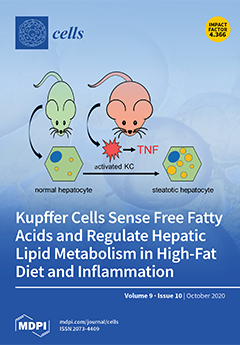Black spot disease, caused by
Alternaria brassicicola in
Brassica species, is one of the most devastating diseases all over the world, especially since there is no known fully resistant
Brassica cultivar. In this study, the visualization of black spot disease development on
Brassica
[...] Read more.
Black spot disease, caused by
Alternaria brassicicola in
Brassica species, is one of the most devastating diseases all over the world, especially since there is no known fully resistant
Brassica cultivar. In this study, the visualization of black spot disease development on
Brassica oleracea var.
capitata f.
alba (white cabbage) leaves and subsequent ultrastructural, molecular and physiological investigations were conducted. Inter- and intracellular hyphae growth within leaf tissues led to the loss of host cell integrity and various levels of organelle disintegration. Severe symptoms of chloroplast damage included the degeneration of chloroplast envelope and grana, and the loss of electron denseness by stroma at the advanced stage of infection. Transcriptional profiling of infected leaves revealed that photosynthesis was the most negatively regulated biological process. However, in infected leaves, chlorophyll and carotenoid content did not decrease until 48 hpi, and several chlorophyll
a fluorescence parameters, such as photosystem II quantum yield (F
v/F
m), non-photochemical quenching (NPQ), or plant vitality parameter (Rdf) decreased significantly at 24 and 48 hpi compared to control leaves. Our results indicate that the initial stages of interaction between
B. oleracea and
A. brassicicola are not uniform within an inoculation site and show a complexity of host responses and fungal attempts to overcome host cell defense mechanisms. The downregulation of photosynthesis at the early stage of this susceptible interaction suggests that it may be a part of a host defense strategy, or, alternatively, that chloroplasts are targets for the unknown virulence factor(s) of
A. brassicicola. However, the observed decrease of photosynthetic efficiency at the later stages of infection is a result of the fungus-induced necrotic lesion expansion.
Full article






